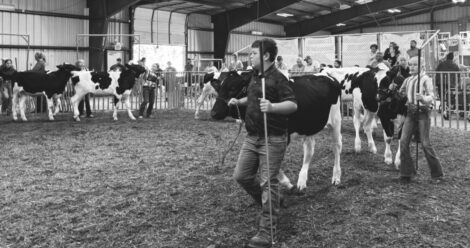History under foot: Bricks built this town
There is just something about a brick street. Marietta is lucky to have more than 6 miles of that something. Bricks, and brick making, are an important part of Marietta history, and a big business that slowly faded away around a century ago. Area brickmakers turned out thousands of bricks per day for use both here and around the country.
One of the largest brickmakers, the Cisler Brickworks, closed nearly a century ago. If you want to see some of their handiwork, you only need to look at Marietta Elementary School. In a brilliant move, the workers removed clay from the construction site at the top of the hill at the end of Putnam Street, took it down to the brickyard near where Giant Eagle is today, fired and pressed the clay into bricks and sent it back up hill to build the new high school.
Construction of the school started in 1924, it opened to students on Sept. 7, 1926. The Cisler bricks made for a sturdy school. Starting life as a high school, it later became a junior high school before becoming a middle school and then finally, last fall, Marietta Elementary School. Brick production in Marietta ended after the high school was completed.
The Marietta bricks from Cisler left a legacy because they were used to build scores of buildings and pave many of the streets in Marietta. Some of those were covered with asphalt, but below much of the pavement, the brick remains in place. The Marietta post office was built from Cisler brick in 1910. Mills Hall at Marietta College also used brick from Cisler.
The brick streets that remain are mostly residential streets except for Putnam Street. The wide street still contains the trolley tracks that have not carried a trolley in more than 70 years. The clay to make the bricks came from different spots around the area, frequently helping to level areas for further development.
After the brickyard closed, the Cisler family donated the land for the Marietta Family YMCA to be built. They also donated the land for Cisler Terrace Park and the land for Ephraim Cutler Street.
There were many brick makers in Marietta before the Cislers started their operation. Tragically a large earth works built by a native population 1,000 ago was destroyed after a city councilman sold them to a brick maker. The mounds of Sacra Via included more than 600 feet of raised mounds leading to the river with a graded ramp between them, but by the late 1880s they were gone. They remain only in the form of buildings that were built with them, including, it is believed, the First Unitarian Universalist Society of Marietta church at Fourth and Putnam streets.
Brick was used heavily for a variety of construction needs. Many Marietta basements are made from multiple layers of Marietta bricks. Some of the finest older homes in town are built from Marietta brick. Goose Run, the creek that runs through town, was covered up as it passes under Butler Street by a culvert made from brick. Oak Grove, the city cemetery at Washington and Eighth streets used up a lot of brick when constructed. Many of the drainage ditches and retaining walls are made from brick, with many of them being from the nearby Cisler facility. The photo on page 2 of today’s Times is of a retaining wall on the back side of the hill that is in the middle of the graveyard. The bricks, like many around town, are clearly marked, Cisler. Marietta, O.
If you want to see other bricks from the area, there are a variety of bricks encased in the sidewalk between Greene and Butler streets on the west side of Second Street. The bricks around Marietta are a lasting tribute to the hardworking people who literally helped to build the town.
Art Smith is online manager of The Marietta Times, he can be reached at
asmith@mariettatimes.com.



